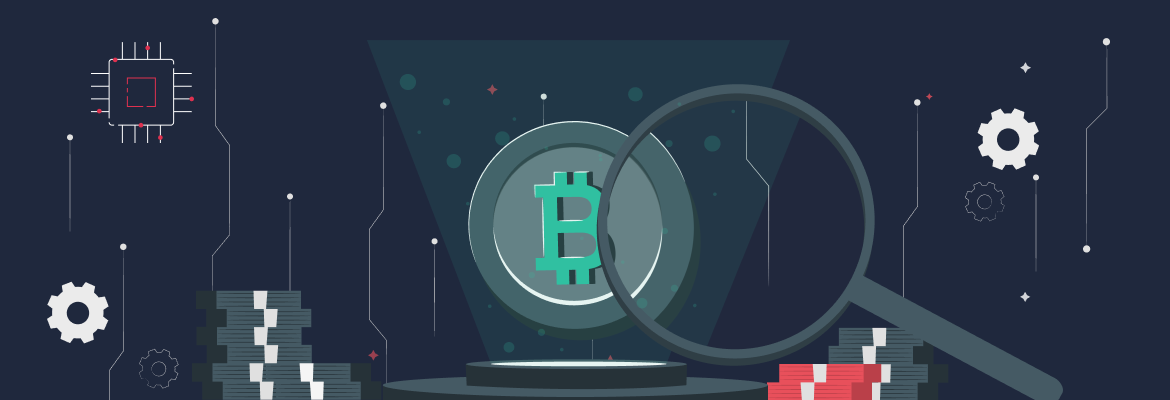Let’s talk
- Your message has been sent!
Apr 14, 2023 / Updated:Sep 25, 2023
Blockchain Technology Explained
While exploring emerging technologies and learning about recent tech news, you will see the word "blockchain" almost everywhere. What makes blockchain the center of discussions, and why is blockchain application development growing in popularity? In this article, "What Is Blockchain Technology Explained" we will be talking about blockchain in a simple and easy-to-understand way, answering the following questions
- What is blockchain technology (for dummies)
- How does blockchain work?
- What is the goal of the technology of blockchain?
- What are the advantages of blockchain?
- What is the future of blockchain?

What Is Blockchain Technology and How Does It Work
Tech savvies probably know that although primarily associated with Bitcoin, the concept of blockchain was created in the 1990s. However, the technology gained a practical use case due to new design solutions with the creation of Bitcoin by the unknown Satoshi Nakamoto. The main goal of blockchain is to ensure immutable transactions, which means the technology allows adding things but not removing them. The new design introduced by Satoshi Nakamoto in the "Bitcoin Whitepaper," released in 2008, solved the problem of double spending in a decentralized way. Due to the solution, cryptocurrency holders can't spend the same coin more than once, and a network of participants prevents unreasonable transactions and possible errors. What is the blockchain technology, in essence?
Blockchain is a database for recording transactions without a need for a third party to validate them. A blockchain consists of data blocks that are chained together. The system distributes data across a peer-to-peer network, where each computer has a copy. Computers connected to the network keep track of all transactions, which makes it practically impossible to cheat the system.

What Are the Advantages of Blockchain?
1. Security
Blockchain uses a computational process called consensus to ensure data consistency. Through this technique, network participants agree that a block is valid before adding it to a chain. For a change to occur, the network majority (at least 51%) should agree that requests are accurate. Due to consensus, it becomes clear whether all copies of the records are in the same state. Blockchain networks reward participants for their contribution to enhancing security.
Blockchain relies on two concepts:
- Cryptography - a technique that secures data from unauthorized access
- Hashing - a process that transforms a string of characters into another value
Cryptographic hashing makes blockchain immutable. Every time a transaction gets verified, the algorithm adds a hash to the block, which makes it unique. Also, every block includes the previous block's hash and is linked to it. This technique makes blockchain secure, as every minor change will change the hash value. Thus, no attacker can change any data in a block and remain unnoticed.
2. Transparency
Public blockchains such as Bitcoin and Ethereum allow everyone to see transaction histories. People can view real-time transactions through blockchain explorers. Token holders can search for their addresses and track all the activities related to them.
Records stored in the blockchain are encrypted; as a result, users remain anonymous while transactions are transparent. Moreover, blockchain protocols are open-source, so everyone can see how the code works. By cloning an existing code and adapting it, developers can build new blockchain applications.
Besides public blockchains, there are also private and permissioned blockchains. In the case of a private blockchain, a single entity has control over the network, and the data is not publicly available. A permissioned blockchain is a combination of both. Data can be public or private based on the participants' permission level. Mostly, large-scale enterprises and institutions use permissioned blockchains.
3. Decentralization
Decentralization is the core concept of blockchain. Compared to traditional ways of storing data, blockchain doesn't keep information in a centralized server. Instead, data is copied and distributed across a network of computers called nodes, which can be located anywhere. There are different types of nodes that keep the network running securely. Computers connected to the network update their copy to keep it on track. Due to its decentralized nature, it is difficult to hack or cheat the system as there is no single point of failure. If an attacker manages to access a single copy of the information, it won't put the entire network at risk. Nor data security depends on factors like power interruption on internet connectivity.
4. Higher Speed
International bank transfers require up to five business days to settle, while blockchain essentially improves the speed of transactions. Unlike banks and other centralized institutions, blockchains have no opening and closing time, which means you can make a transaction 24/7. Processes are automated, making transactions faster, although blockchains process transactions at different speeds. For example, it takes longer for the Bitcoin network to validate a transaction than for Ethereum. While speed can be limited due to the architecture of a blockchain and the network activity, different solutions are created to speed up transactions further. For Bitcoin, such a solution is Lightning Network. By allowing users to send and receive Bitcoin quickly, the solution aims to boost the coin's mainstream adoption.
5. Cost Effectiveness
Blockchain can reduce the cost of financial transactions in several ways. In traditional finance, payments must pass through several layers of third parties, such as banks, clearing houses, and other financial institutions, making processes costly and complicated. Blockchain provides users with peer-to-peer transactions that operate without any intermediaries. The technology reshapes the payments industry creating new, cost-effective business models. Also, blockchain may decrease costs related to checking the legitimacy of financial transactions, as parties can view and access all the records themselves. Various initiatives worldwide focus on leveraging blockchain technology to improve operations and make them more cost-effective in finance, real estate, supply chain, and other sectors.

What Is the Future of Blockchain?
Blockchain technology has a great impact on business and society on many levels. By going beyond cryptocurrencies, blockchain is used in healthcare, gaming, art, insurance, law, commerce, real estate, and other fields. Although the technology still faces challenges such as scalability and regulations, it has been seeing steady growth and adoption. With various use cases, including smart contracts, DeFi, the metaverse, NFTs, GemeFi, and others, blockchain is changing how we interact and use the internet.
While blockchain is shifting the world, start developing your blockchain application and launch a product that makes a difference. At Definme, we will help you create a blockchain application from scratch by providing services from ideation to implementation and maintenance.
Interested in creating your solution on blockchain?
We at Definme know all about the novelties and progress of blockchain. Our team would love to help you launch your own solution and benefit from decentralized technologies. Contact us to evaluate your idea and start building today.

Articles
-
 What Is Account Abstraction and How It Transforms Web3
What Is Account Abstraction and How It Transforms Web3
Account abstraction (AA) is a huge development in Web3 as it lets …
Nov 02, 2023
-
 6 Tips to Hire Outsource Web3 Developers and Launch With Success
6 Tips to Hire Outsource Web3 Developers and Launch With Success
Demand for IT outsourcing continues to grow in 2023. This is true …
Sep 26, 2023
-
 New Partnership: Definme Has Joined Aragon’s DAO Experts Family
New Partnership: Definme Has Joined Aragon’s DAO Experts Family
Providing DAO development services for years, our team has been gaining new …
Aug 26, 2023
